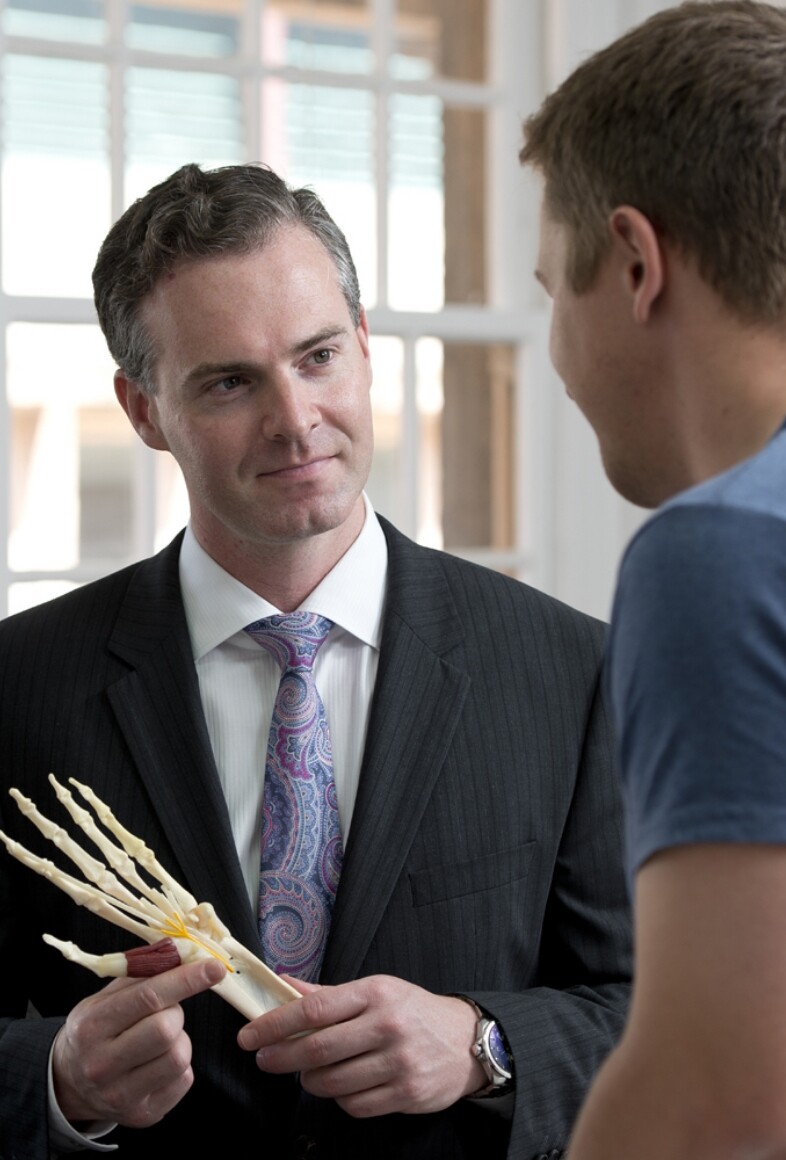Dupuytren’s Contracture
Hand & Wrist Diseases & Conditions
Dupuytren’s contracture is an abnormal thickening of the skin in the palm of your hand. The thickening is at the base of the fingers, and appears as a thick band, or lumpy skin.
It is believed that Dupuytren’s contracture is a hereditary condition, that is brought on by lifestyle choices, including drinking, smoking, and the use of medication.
The condition tends to get worse over time, and may cause difficulty in grasping and holding items.


Dupuytren’s contracture Risk Factors
- Over 50
- Male
- North European / Scandinavian
- Family History
- Using seizure medication
- Smoking
- Excessive alcohol intake
- Have diabetes
Dupuytren’s contracture Symptoms
- Can’t flatten hand on a flat surface
- Small lumps on the hand
- Thick bands of tissue under the skin
- Fingers are pulled forward
- Hands are not working well
Dupuytren’s contracture Treatment
As there is no cure for the disease, treatment will depend on your age, health, severity of the condition, and expected outcomes. Treatment for Dupuytren’s contracture will depend on a range of factors.
You may opt for the following:
Alternative treatment
- Steroid injection: Cortisone injections can offer relief from pain, and stop the condition from deteriorating.
- Surgical treatment
- Surgery: In advanced cases of Dupuytren’s contracture, your surgeon will remove the thickened skin, and this should restore the mobility of your hand. Unfortunately, the condition may return, and will require surgery again.
Non-surgical treatment
There are many new developments in the treatment of Dupuytren’s contracture, including:
- Enzyme injection: Enzymes are injection into the affected cords, weakening the contracting tissue. The surgeon will then straighten the fingers, and pull apart the restrictive cords.
- Needle Aponeurotomy: Needle aponeurotomy is a minimally invasive procedure, where your surgeon will use needles to break apart the restrictive cords, in order to lengthen them, and to restore mobility to your fingers.
- Radiation therapy: Low energy rays are targeted directly to the affected tissue, softening them, and stopping the contractions from happening.
The biggest issue facing patients with Dupuytren’s contracture, is that they do not notice the early signs of the condition, and due to a lack of awareness of the disease, they often don’t get treatment before the condition has developed to an advanced stage.
If you are having difficulty straightening your fingers, even slightly, then it is important to speak to your GP, as there are many treatment options available, and the earlier it is identified, the better.
Once you have a referral…
Book your consultation here.

